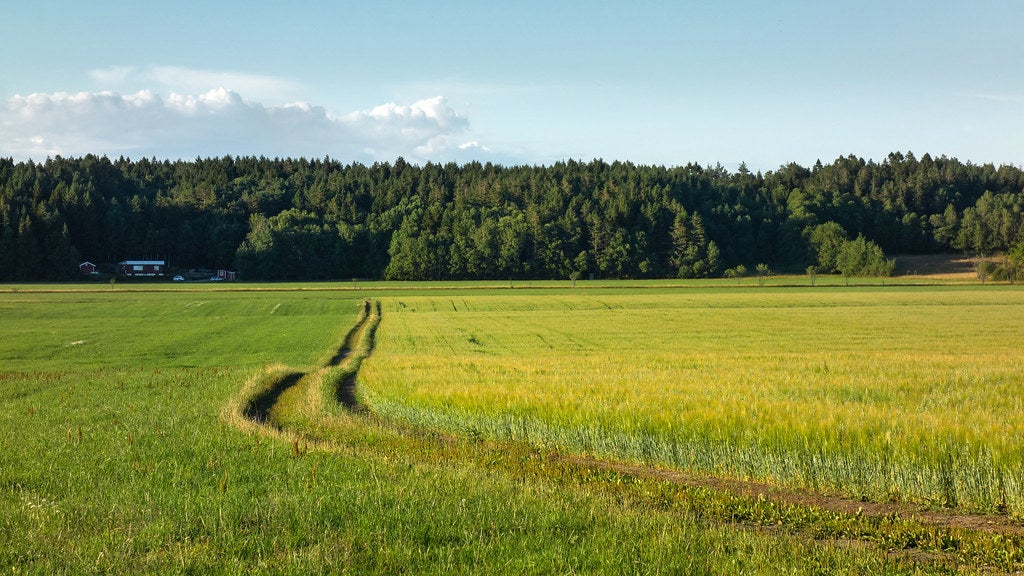Small grain crops, like oats and wheat, are making a comeback in the Midwest, disrupting the traditional corn-soy rotation and delivering big benefits for farmers and the environment. And they’re about to get another big boost.
The U.S. Department of Agriculture recently awarded a $1.1 million Conservation Innovation Grant to Practical Farmers of Iowa to advance the use of small grains crops and test market-based solutions for lowering emissions linked to nitrogen from manure and fertilizer.
The three-year project is a collaboration with Sustainable Food Lab, leading universities, and food and beverage companies including Smithfield Foods, Cargill, General Mills, McDonalds, Oatly, PepsiCo, Seven Sundays, Starbucks, Target, Truterra and Unilever.
This grant adds to the growing momentum for agricultural climate solutions that make a lasting impact. Here’s how adding small grains to crop rotations can slow the rate of climate change and build resilience.
Pilot showcases environmental benefits of small grains
The USDA grant builds on a pilot project in which Practical Farmers of Iowa, Sustainable Food Lab, Smithfield Foods and Environmental Defense Fund collaborated to create a market demand signal for farmers in northern Missouri and southern Iowa to diversify their corn-soy system by growing small grains followed by a legume cover crop.

Until the 1950’s, small grains were commonplace. Oats were planted on up to 40% of farmland in Iowa in any given year. As the agriculture industry matured, market demand for small grains essentially disappeared, and farmers responded to incentives to grow corn and soy. Photo credit.
In the 2019-2020 cropping season, Smithfield purchased 32,000 bushels of oats and 3,000 bushels of wheat. Practical Farmers of Iowa provided cost-share and agronomic support to farmers who planted small grains followed by a legume cover crop. Smithfield will continue to offer forward contracts for the 2020-2021 season and hopes to recruit even more local growers to participate.
The partners also laid the groundwork to better understand and document the value proposition to growers and the environmental benefits of an extended rotation, including reduced greenhouse gas emissions, increased soil water holding capacity and improved soil health.
Far fewer emissions overall
Diverse rotations are an appealing option for growers and supply chain partners for many reasons, but particularly for the potential greenhouse gas reductions. Extended crop rotations with small grains can have 21% lower emissions compared to corn-soy systems, according to small grains farm production data previously collected and analyzed by Sustainable Food Lab and Practical Farmers of Iowa.
Fewer emissions from manure
A spring small grain crop, such as oats, can be planted in March and harvested in July, as opposed to a corn or soy crop that is planted in April or May and harvested in October.
This creates a longer window of time for a leguminous cover crop to be grown after harvest. This window allows farmers to apply manure to cover cropped fields during the hottest months of the year when emissions of methane and nitrous oxide from stored manure typically peak. Here’s how adding small grains to crop rotations can slow the rate of climate change and build resilience. Share on X
Fewer emissions from fertilizer
A diverse rotation that leverages small grains and cover crops can reduce synthetic nitrogen fertilizer application rates, which directly correlates to a reduction in nitrous oxide emissions. Legume cover crops enable this management change.
Nitrogen-fixing legume cover crops consistently contribute an average of 40 lbs. of nitrogen per acre depending on the growing season, but can contribute up to 80-100 lbs. per acre with the right conditions.
Cover crops can also hold 60-70% of applied manure nutrients, which can decrease the need for synthetic nitrogen on the subsequent corn crop. Practical Farmers of Iowa documented no statistical difference in corn yields when nitrogen fertilizer application rates were reduced by 90 lbs. nitrogen per acre following a clover cover crop.
The results of this pilot show big potential for small grains, which will hopefully only grow with expanding interest and investments in climate-smart agriculture.









